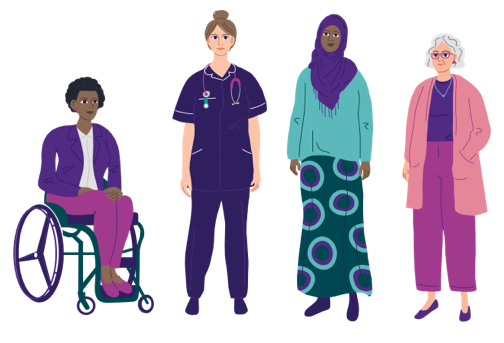Younger women face different challenges with ovarian cancer. Find out how ovarian cancer and the resulting treatment may affect your fertility. Explore advice about managing early menopause, your relationships and body image.
- Treatment
- Surgical menopause
- Fertility
- Body image, sex and intimacy
- Coping with a diagnosis
- Talking about your diagnosis
- Practical advice
You may also find our information for those newly diagnosed with ovarian cancer useful.
What are the most common types of ovarian cancer in younger women?
The most common types of ovarian cancer are epithelial cancers. These start in the lining of the ovary, fallopian tubes or the peritoneum (the lining that covers the organs inside your tummy). Epithelial cancers usually affect women over the age of 45. But if you’re younger it’s still possible to develop them.
When we use the term ovarian cancer we're also referring to primary peritoneal cancer and fallopian tube cancer. These cancers are treated in a similar way.
In younger women, the more common types are:
-
Borderline tumours – these tumours are made up of abnormal cells but they are not cancer. The cells are slowly dividing and are not likely to spread. The treatment usually consists of surgery only.
-
Low grade ovarian cancer - ovarian cancer is divided into high grade and low grade. High grade cancer is the most common type and is treated with surgery and chemotherapy. Low grade serous ovarian cancer is a type of epithelial ovarian cancer that is more likely to affect younger women. Low grade serous cancers typically grow slowly and are usually treated with surgery. They can also be treated with hormone-blocking tablets or chemotherapy. But you may not need any other treatment after surgery.
-
Germ cell tumours – these tumours start in the egg cells of the ovary. With this type of tumour, it may be possible just to remove the affected ovary and fallopian tube to allow you to have children in the future. There's specific chemotherapy for germ cell tumours which varies from that used in other types of ovarian cancer. Types of germ cell tumours include yolk sac tumours, embryonal carcinoma, immature teratoma, choriocarcinoma, and dysgerminoma.
-
Granulosa and Sertoli–Leydig cell tumours – these are very rare cancers that start in the tissue that supports the ovary. Sometimes they can release hormones such as oestrogen or testosterone. They are treated with surgery and sometimes with hormone-blocking drugs or chemotherapy.






